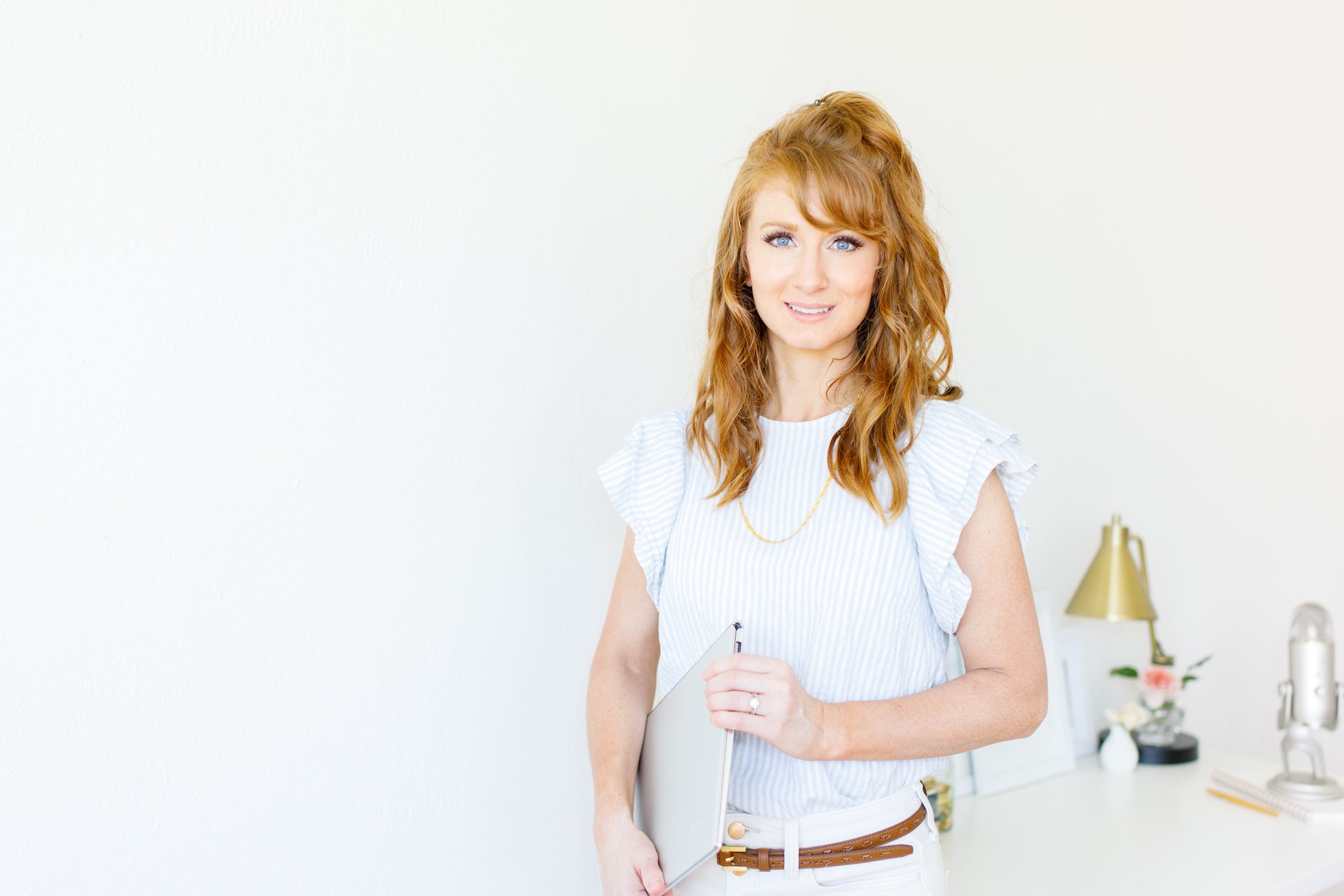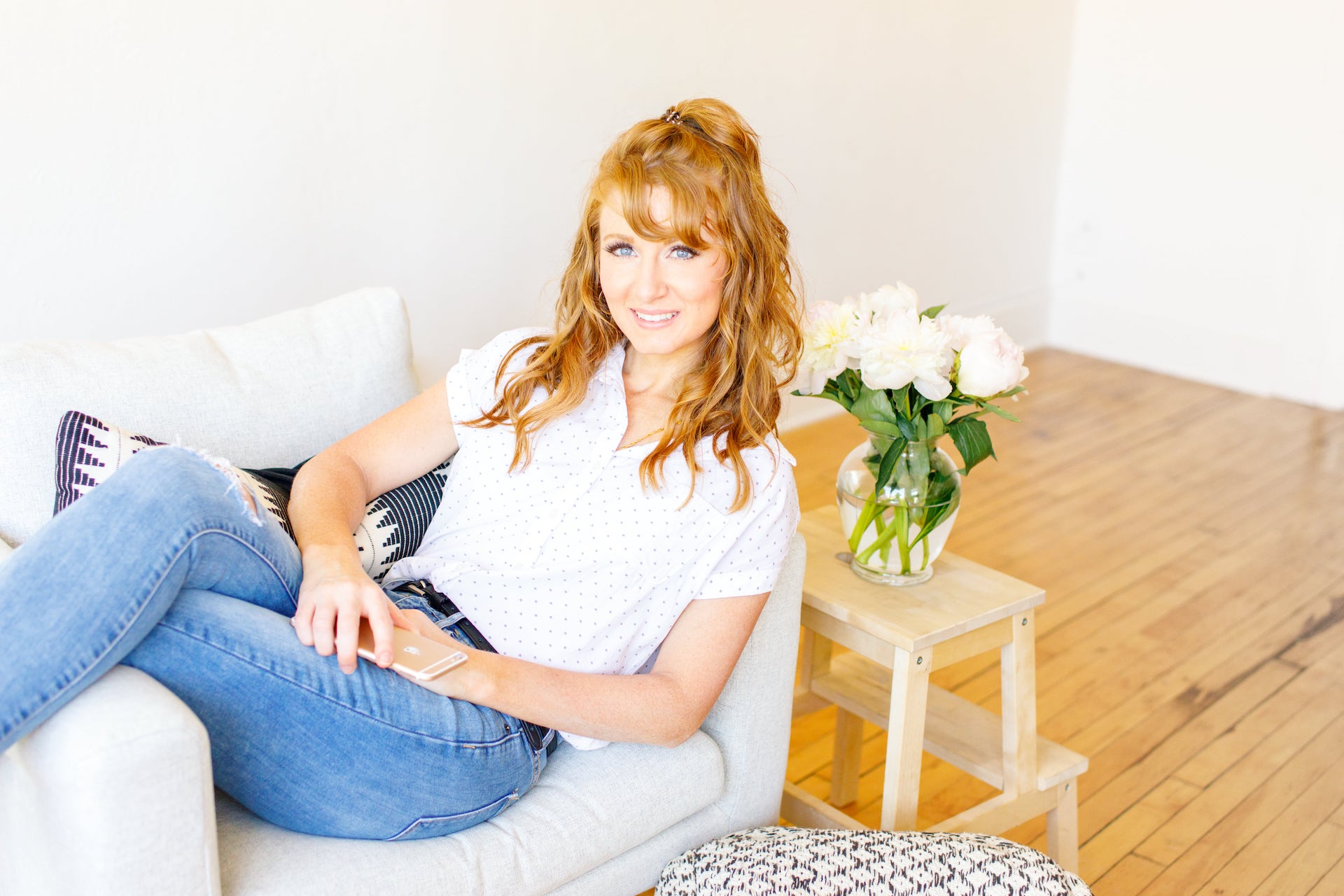Interior designers, home stagers, professional organizers, and window treatment specialists often feel overwhelmed when trying to figure out how to grow their businesses. They wish to build a strong and successful brand but aren’t sure where to start and expect marketing campaigns to cost a fortune. As a result, these doubts often hinder their professional development. But luckily, we at ArchiCGI got a chance to interview an expert who can help to address these worries. Meet Kate the Socialite — a top marketing coach and founder of the Socialite agency who has helped hundreds of home industry businesses to grow and flourish.
The team of our architectural visualization studio hopes that our clients, a lot of whom are home professionals, will find the answers they need in this interview with Kate. In the course of our talk, she shared some of her expertise on finding the most efficient ways to promote one’s services in this competitive industry. So, read on to find out how to improve your promotion efforts and grow your business to get more clients!
#1. Hi Kate! First of all, Kate the Socialite — how did you come up with this name?
Hey! That’s a great question. My brand represents the vibe my clients want to attain in their own businesses: social influence, a general sense of affluence, and success. I named my business for my clients. Additionally, my business name is unique enough to be memorable without being confusing. It also puts me as the “mascot” of my company. Even though I have a national and international team, I remain the face of my brand. My business name is one part of how I do this.
#2. Now, tell us about your background. How did you start working in digital marketing and did you choose to help home professionals in particular?
I launched my business in 2014. And by launched, I mean that I wanted to quit every other week. I hated marketing because I didn’t understand it. I hated money because I didn’t understand how to make and manage it. (Not a great combination of struggles, let me tell you!)
However, as much as I wanted to quit, I knew I was meant to be a business owner. I worked with my husband, who is now our CFO and advisor, and I worked with a business coach, and I took Marie Forleo’s B School course to really get myself up to speed on the financial and the marketing sides of business. These things were game-changing.
After two years of muddling through the mess that I now call marketing, it finally clicked. I understood what a sales funnel was, and I knew who my ideal client was. From there, I was able to launch a marketing membership alongside my husband. That membership, Socialite Vault, now reaches home industry professionals in about 10 countries.
I chose to specialize in marketing for interior designers, home stagers, professional organizers, and window treatment professionals because I love working with entrepreneurs in these industries, and these industries are similar enough to each other that I don’t lose my “niche focus.”
“As much as I wanted to quit, I knew I was meant to be a business owner.”
#3. What’s the main principle of your practice as a digital marketing coach for home professionals?

On my podcast and within my membership, I preach this primary principle in various ways: marketing is simple. I know it is, because I’ve had to make it simple for myself. Simple can be hugely successful.
The primary reason marketing has been seen as complicated or expensive is largely due to the rise of companies that try to sell business owners things that they don’t need to solve problems they don’t have.
There is a vast difference between marketing a product-based business and a service-based business. Sadly, many home pros are following all the marketing trends of a product-based business and ending up quite frustrated when their service-based business doesn’t grow.
A secondary reason why marketing is often viewed as complicated or expensive is that new technologies are popping up all the time, and entrepreneurs across all industries have a great fear of missing out. They will hop on every social media trend and try every marketing hack without stopping to assess whether it makes sense for their business model or their ideal client.
That said, I have met the most powerful entrepreneurs in the home industry. I mean, it is INCREDIBLE what these people do every day. At my agency, Socialite, I get to work directly with those who are just getting started, and with those who’ve been in business for decades. Their talent and hard work, their entrepreneurial hunger — it is invigorating. I have so much respect for the home industry. Running a business in the home industry requires emotional intelligence and psychological awareness as much as it requires actual design/spatial knowledge.
“There is a vast difference between marketing a product-based business and a service-based business.”
#4. What is unique about your approach to marketing one’s services in the home industry?
I firmly believe that entrepreneurs need to spend LESS time marketing themselves and completely simplify their strategies. Doing less allows you to understand which efforts are actually driving an ROI into your business. After all, the alternative is to have a huge marketing budget and/or feel scattered. Throwing stuff against the wall to see what sticks is not a recipe for marketing success — even if everyone else is doing it.
“I firmly believe that entrepreneurs need to spend LESS time marketing themselves and completely simplify their strategies.”
#5. What’s the most common mistake home professionals make when promoting their services? How do you help them with that at Socialite?

The most common marketing mistakes I see home pros make, in order of frequency, include:
- Not being clear on who their ideal client is — this would make their marketing so much easier.
- Not setting up a sales funnel for their business — this means the difference between having a steady stream of leads versus simply wondering when and if they are going to get a new client.
- Undervaluing their brands with inconsistent visuals or a low-quality website — this won’t attract a client who values them. Think of the business you want to be a decade from now and become that business today.
- Attracting bargain hunters by offering free consultations — offer a free 15-minute discovery call instead. Free consultations are so damaging to your brand’s perceived value.
Socialite solves these marketing issues in a few ways:
- Socialite Vault is our marketing membership for home pros that provides complete sales funnels, unlimited 1:1 marketing consultation, and a bevy of templates and white-glove services, depending on the package you choose.
- For non-members, we also offer a huge online shop of marketing templates that can be purchased as needed. Our Vault members receive nearly all these templates for free.
- We also offer custom website design and hand-crafted website templates with built-in SEO.
- I host a weekly marketing podcast, The Kate Show, that serves the home industry exclusively on all things marketing and business.
“Think of the business you want to be a decade from now and become that business today.”
Take your design presentation to a new level with interior rendering
#6. Are there any universal marketing strategies or should every brand have a custom one?
Every business needs a sales funnel, and certain parts of that funnel are universal. Once you have a basic idea of your favorite type of client OR your favorite type of service, your sales funnel should look like this:
- Initiate a relationship. This can be done through social media, or offline networking, or blogging. These are the relational elements of your business. Perhaps you use all of these methods — or just one. It depends on your ideal client.
- List a free offer on your website. This is not a free consult or service, as that will only attract bargain-hunters. Your free offer (a PDF, ebook, or video — most commonly) must match the type of client you want to attract. This free offer is called a lead magnet because it attracts, or magnetizes, the right leads to your business. This offer lives on your website, which is the first place people will go after meeting you on social media or in person. No one can access the free offer unless they sign up for your mailing list.
- Maintain ongoing communication. Once a potential client has entered their email address to receive your free offer (lead magnet), they need to continue hearing from you once per month via email. Not once per quarter. Not once per week. People will either forget about you or become annoyed by your persistence. Hearing from you once per month is the sweet spot. Plus, it is also quite manageable for you to handle or outsource.
- Conduct onboarding for new clients. When you consistently send a monthly email newsletter, you will encourage a response. When a lead responds to ask a question or book a call, your job is to conduct a great discovery call and send them your client onboarding information. This might consist of a guide that tells them what to expect next, a questionnaire, a contract review, or all of the above.
My marketing membership, Socialite Vault, provides all of these elements to home professionals.
#7. Do your clients use 3D visualization in their work? And do you think using 3D visualization makes a big difference for such professionals as interior designers? If so, how?

Yes, most of my agency’s clients use 3D renderings both internally and for illustrating ideas to their clients. The home industry is completely visual and there is no way to fully and accurately “tell” a client about the design plan. They have to see it for themselves.
#8. Digital marketing tools and techniques are constantly changing and evolving. What’s the latest hot trend?

Social video is definitely trending, but that doesn’t mean every home pro should whip out a camera and start filming. If you enjoy video or are brave enough to try it, and if you know your ideal client is on social media, it is worth your time. However, if your ideal client isn’t on social media, your time would be better spent blogging, email marketing, and in-person networking.
Honestly, most custom/luxury interior designers do not have clients who use social media, at least not in a way that influences their buying decisions.
#9. What marketing advice would you give to someone just starting their own business in the home industry?
Pick your specialty. Perhaps you want to specialize in helping a certain type of client (stay-at-home moms or career professionals, for example). Maybe you’d rather specialize in a certain type of service instead (you only do large kitchen remodels, or you are the tiny house specialist). Being specific will help you become known. Being known results in being seen as the leader in that niche, which can generate a steady level of organic publicity.
After you’ve picked your strategy, set up your sales funnel. Marketing success is never an accident. It is intentional, and most of it is under your control.
“Pick your specialty. Being specific will help you become known.”
Our team thanks Kate the Socialite for this amazing interview full of valuable insights one can immediately act upon. We hope that it helps our readers reach new heights in the home industry as they learn new ways of attracting their ideal clients. And to Kate, we wish to keep up her inspiring work of empowering home professionals around the world.
Looking for top-quality 3D interior visualization services for your next presentation or marketing campaign? Contact us at ArchiCGI and get crisp photorealistic visuals for any type of home project!

Ana Wayne
Content Writer, Copywriter
Ana is a content writer for ArchiCGI. She has a passion for design and architecture - and for talking about it. Outside of work, she is a fan of sci-fi movies and a street food connoisseur.


